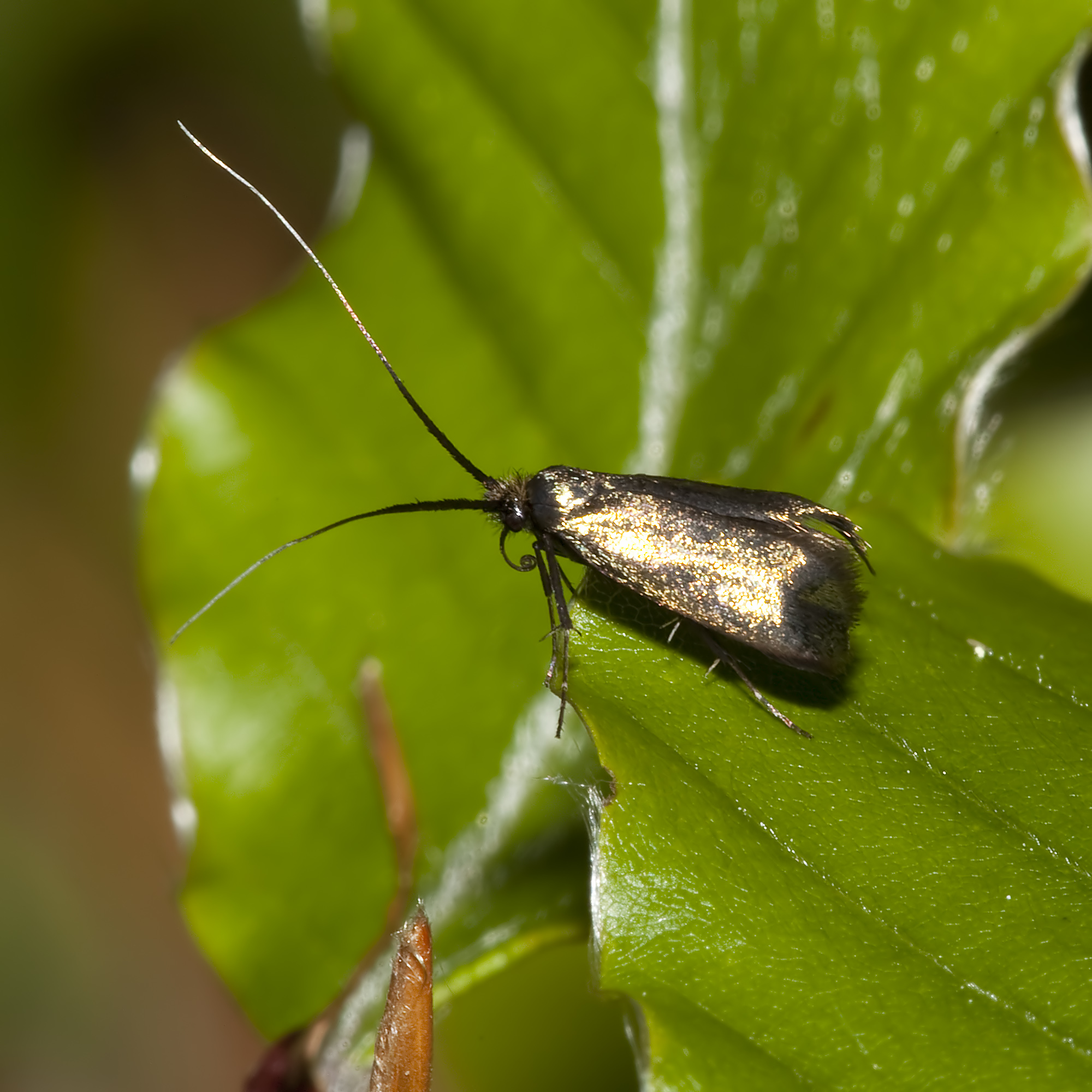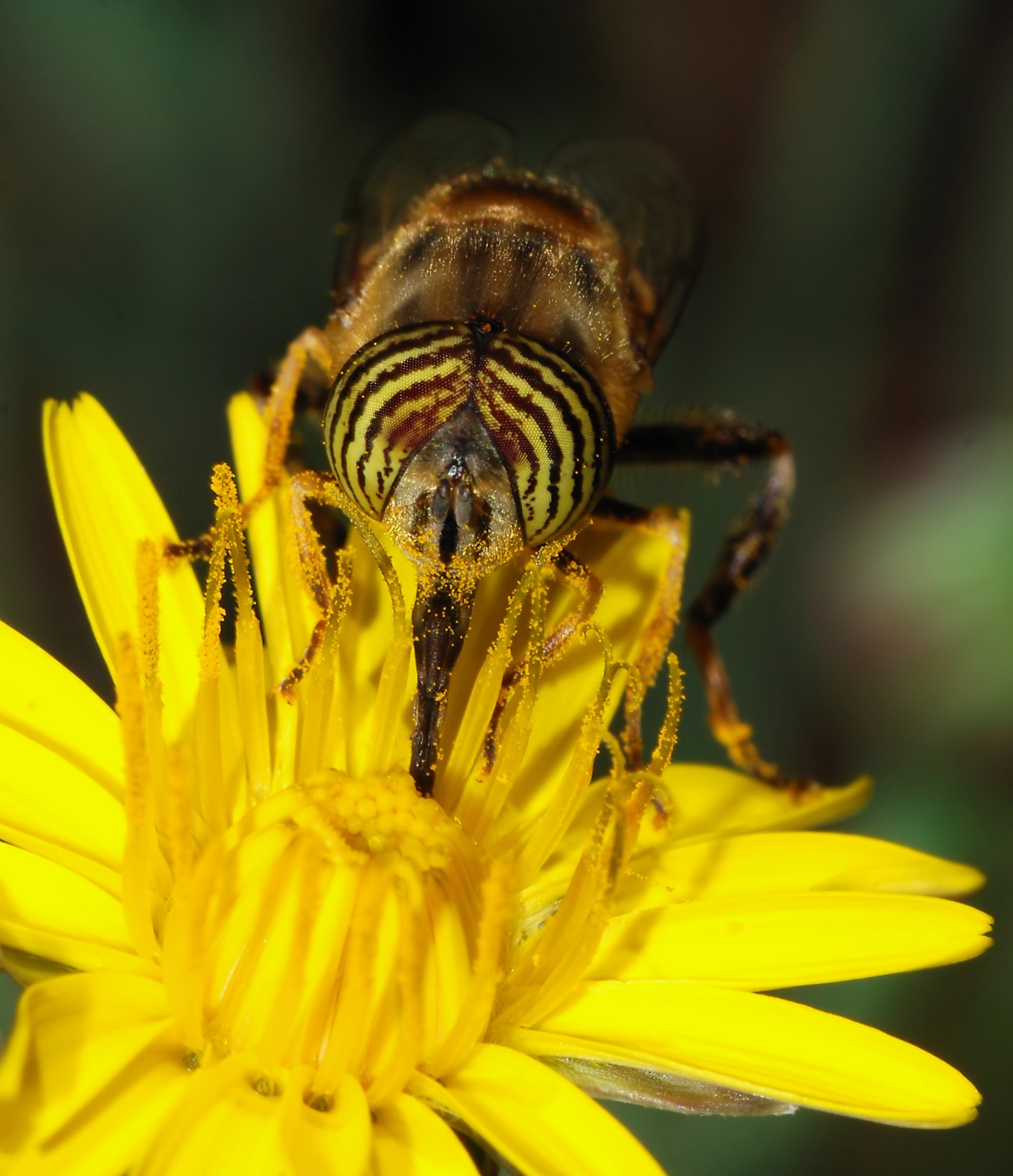|
Adelidae
The Adelidae or fairy longhorn moths are a family of monotrysian moths in the lepidopteran infraorder Heteroneura. The family was first described by Charles Théophile Bruand d'Uzelle in 1851. Most species have at least partially metallic, patterned coloration and are diurnal, sometimes swarming around the tips of branches with an undulating flight. Others are crepuscular and have a drab coloration. Fairy longhorn moths have a wingspan of 4–28 millimeters, and males often have especially long antennae, 1–3 times as long as the forewing. They are widespread around the world and can be found over much of North America and Eurasia from April to June. About 50 species occur in Europe, of which most widely noted is the green longhorn (''Adela reaumurella'') which can sometimes reach great abundance; due to climate change its peak flying season is shifting towards spring. In general, they are more plentiful in the Northern Hemisphere, but the family occurs in the Neotropic ... [...More Info...] [...Related Items...] OR: [Wikipedia] [Google] [Baidu] |
Nemophora Degeerella
The longhorn moth or yellow-barred long-horn (''Nemophora degeerella'') is a diurnal lepidopteran from the moths family Adelidae (fairy longhorn moths). Distribution and habitat This species is present on most of Europe, but it is fairly common in north west Europe. The habitat of these moths is damp deciduous forests with wooded lanes and hedgerows. Description The wingspan of ''Nemophora degeerella'' ranges from in males, from in females. The head is dark brown, with dark and yellow hair-like scales. The thorax has a bronzy golden shining. Forewings are shiny bronzy golden yellow or shiny ochreous with longitudinal dark brown and lead-gray blueish-violet shining streaks. A yellow transversal band cross the whole forewings, framed by two lead-gray blueish-violet shining stripes with a dark brown border. The three longitudinal lead-gray, blueish-violet shining stripes situated in the basal part of the wings do not treach the transversal fascia. Rear wings are brownish gray. Th ... [...More Info...] [...Related Items...] OR: [Wikipedia] [Google] [Baidu] |
Green Longhorn
The green longhorn (''Adela reaumurella'') is a lepidopteran from the moth family Adelidae, the fairy longhorn moths. Distribution ''Adela reaumurella'' has a palearctic distribution. It occurs in southern North Europe, Western Europe through Central Europe to Eastern Europe. Across the temperate Palearctic the range extends to Japan. In the South, the species occurs to Sicily and Anatolia. It is missing on the Iberian Peninsula. Habitat These moths inhabit forests and open meadows. Description The wingspan of ''Adela reaumurella'' ranges from 14 to 18 millimeter. Wings have an ovoid-elongated shape with rounded apex. The upper wings of both sexes are bronzy or metallic greenish, close along the body. The hind wings are dark brown with a bronze-violet shine. The males have very long thread-shaped whitish antennas, forward-facing and reaching about four times the length of the body. They have very developed eyes and rough black hair on their heads and thorax. The females have rel ... [...More Info...] [...Related Items...] OR: [Wikipedia] [Google] [Baidu] |
Adela (moth)
''Adela'' is a genus of the fairy longhorn moth family (Adelidae). Among these, it belongs to subfamily Adelinae. Species * '' Adela albicinctella'' Mann, 1852 * '' Adela australis'' (Herrich-Schäffer, 1855) * '' Adela caeruleella'' Walker, 1863 – (southern longhorn moth) * '' Adela collicolella'' (Walsingham, 1904) * '' Adela croesella'' (Scopoli, 1763) * '' Adela cuneella'' Walsingham, 1891 * '' Adela cuprella'' (Denis & Schiffermüller, 1775) * '' Adela droseropa'' Meyrick, 1921 * '' Adela eldorada'' Powell, 1969 * '' Adela electella'' (Walker, 1863) * '' Adela flammeusella'' Chambers, 1876 * '' Adela gymnota'' (Meyrick, 1912) * '' Adela homalella'' (Staudinger, 1859) * ''Adela janineae ''Adela janineae'' is a species of moth of the family Adelidae. It is known from Madagascar Madagascar, officially the Republic of Madagascar, is an island country that includes the island of Madagascar and numerous smaller peripheral i ...'' (Viette, 1954) * '' Adela mazzo ... [...More Info...] [...Related Items...] OR: [Wikipedia] [Google] [Baidu] |
Adela Croesella
''Adela croesella'' is a moth of the family Adelidae. It is found in most of Europe. The wingspan is 11–14 mm. The head is ferruginous mixed with black. The antennae in male 2.5 he length of the forewing black, the tip white; in female hardly 1.5, thickened with violet-black scales to above middle, remainder white. The forewings are shining dark violet fuscous, more or less streaked suffusely between veins with golden-ochreous with a straight deep yellow fascia close beyond middle, narrower costally, edged first with dark fuscous and then with narrow violet fasciae. The hindwings are dark purplish fuscous. Sterling, P. and Parsons, M. 2012 ''Field Guide to the Micro Moths of Great Britain and Ireland'' Dorset British Wildlife Publishing, 2012 - 2nd edition (Bloomsbury Wildlife Guides) Adults are on wing from late May to June. They are on wing during the day in sunshine and visit flowers. 4.7 x 21.2 cmAt first, the larvae probably feed on flowers of ''Hippophae rh ... [...More Info...] [...Related Items...] OR: [Wikipedia] [Google] [Baidu] |
Ceromitia Iolampra
''Ceromitia iolampra'' is a moth of the family Adelidae. It is found in the Australian Capital Territory, New South Wales and Victoria (Australia), Victoria. The larvae feed on the flowers of ''Acacia baileyana'' and ''Acacia genistifolia''. Later instar larvae live on the ground in a portable case made from flower parts or detritus. External links Australian Faunal Directory Moths of Australia Adelidae Endemic fauna of Australia Moths described in 1900 Taxa named by Alfred Jefferis Turner {{Ceromitia-stub ... [...More Info...] [...Related Items...] OR: [Wikipedia] [Google] [Baidu] |
Micromoth
Microlepidoptera (micromoths) is an artificial (i.e., unranked and not monophyletic) grouping of moth families, commonly known as the "smaller moths" ( micro, Lepidoptera). These generally have wingspans of under 20 mm, so are harder to identify by external phenotypic markings than macrolepidoptera. They present some lifestyles that the larger Lepidoptera do not have, but this is not an identifying mark. Some hobbyists further divide this group into separate groups, such as leaf miners or rollers, stem or root borers, and then usually follow the more rigorous scientific taxonomy of lepidopterans. Efforts to stabilize the term have usually proven inadequate. Diversity Vernacular usage divides the Lepidoptera simply into smaller and larger or into more-primitive and less-primitive groups, microlepidoptera and macrolepidoptera, respectively. Intuitively, the "micros" are any lepidopteran not currently placed in the macrolepidoptera. This paraphyletic assemblage, however, ... [...More Info...] [...Related Items...] OR: [Wikipedia] [Google] [Baidu] |
Adeloidea
Adeloidea is a superfamily of primitive monotrysian moths in the order Lepidoptera which consists of leafcutters, yucca moths and relatives. This superfamily is characterised by a piercing, extensible ovipositor The ovipositor is a tube-like organ used by some animals, especially insects, for the laying of eggs. In insects, an ovipositor consists of a maximum of three pairs of appendages. The details and morphology of the ovipositor vary, but typica ... used for laying eggs in plants (Davis, 1999). Many species are day-flying with metallic patterns. References *Davis, D.R. (1999). The Monotrysian Heteroneura. Ch. 6, pp. 65–90 in Kristensen, N.P. (Ed.). ''Lepidoptera, Moths and Butterflies''. Volume 1: Evolution, Systematics, and Biogeography. Handbuch der Zoologie. Eine Naturgeschichte der Stämme des Tierreiches / Handbook of Zoology. A Natural History of the phyla of the Animal Kingdom. Band / Volume IV Arthropoda: Insecta Teilband / Part 35: 491 pp. Walter de ... [...More Info...] [...Related Items...] OR: [Wikipedia] [Google] [Baidu] |
Monotrysia
The Monotrysia are a group of moths in the lepidopteran order, not currently considered to be a natural group or clade. The group is so named because the female has a single genital opening for mating and laying eggs, in contrast to the rest of the Lepidoptera (Ditrysia), which have two female reproductive openings. Later classifications used Monotrysia in a narrower sense for the nonditrysian Heteroneura, but this group was also found to be paraphyletic with respect to Ditrysia. Apart from the recently discovered family Family (from ) is a Social group, group of people related either by consanguinity (by recognized birth) or Affinity (law), affinity (by marriage or other relationship). It forms the basis for social order. Ideally, families offer predictabili ... Andesianidae,Davis, D. R. and Gentili, P. (2003). Andesianidae, a new family of monotrysian moths (Lepidoptera: Andesianoidea) from South America. ''Invertebrate Systematics'', 17: 15-2Abstract/ref> most of the g ... [...More Info...] [...Related Items...] OR: [Wikipedia] [Google] [Baidu] |
Australia
Australia, officially the Commonwealth of Australia, is a country comprising mainland Australia, the mainland of the Australia (continent), Australian continent, the island of Tasmania and list of islands of Australia, numerous smaller islands. It has a total area of , making it the list of countries and dependencies by area, sixth-largest country in the world and the largest in Oceania. Australia is the world's flattest and driest inhabited continent. It is a megadiverse countries, megadiverse country, and its size gives it a wide variety of landscapes and Climate of Australia, climates including deserts of Australia, deserts in the Outback, interior and forests of Australia, tropical rainforests along the Eastern states of Australia, coast. The ancestors of Aboriginal Australians began arriving from south-east Asia 50,000 to 65,000 years ago, during the Last Glacial Period, last glacial period. By the time of British settlement, Aboriginal Australians spoke 250 distinct l ... [...More Info...] [...Related Items...] OR: [Wikipedia] [Google] [Baidu] |
Subfamilies
In biological classification, a subfamily (Latin: ', plural ') is an auxiliary (intermediate) taxonomic rank, next below family but more inclusive than genus. Standard nomenclature rules end botanical subfamily names with "-oideae", and zoological subfamily names with "-inae". Detarioideae is an example of a botanical subfamily. Detarioideae is a subdivision of the family Fabaceae (legumes), containing 84 genera. Stevardiinae is an example of a zoological subfamily. Stevardiinae is a large subdivision of the family Characidae, a diverse clade of freshwater fish. See also * International Code of Nomenclature for algae, fungi, and plants * International Code of Zoological Nomenclature The International Code of Zoological Nomenclature (ICZN) is a widely accepted Convention (norm), convention in zoology that rules the formal scientific name, scientific naming of organisms treated as animals. It is also informally known as the I ... * Rank (botany) * Rank (zoology) ... [...More Info...] [...Related Items...] OR: [Wikipedia] [Google] [Baidu] |
Proboscis
A proboscis () is an elongated appendage from the head of an animal, either a vertebrate or an invertebrate. In invertebrates, the term usually refers to tubular arthropod mouthparts, mouthparts used for feeding and sucking. In vertebrates, a proboscis is an elongated nose or snout. Etymology First attested in English in 1609 from Latin , the latinisation (literature), latinisation of the Ancient Greek (), which comes from () 'forth, forward, before' + (), 'to feed, to nourish'. The plural as derived from the Greek is , but in English the plural form ''proboscises'' occurs frequently. Invertebrates The most common usage is to refer to the tubular feeding and sucking organ of certain invertebrates such as insects (e.g., Insect mouthparts#Proboscis, moths, butterflies, and mosquitoes), worms (including Acanthocephala, Nemertea, proboscis worms) and gastropod molluscs. Acanthocephala The Acanthocephala, the thorny-headed worms or spiny-headed worms, are characterized by the pr ... [...More Info...] [...Related Items...] OR: [Wikipedia] [Google] [Baidu] |



